
The story of the past 2000 years, is the inexorable rise of the human population. Yet as fertility rates drop faster than forecast, this remarkable story is set to go into an unchartered reverse.
In the twentieth century, Italy’s population roughly doubled in size. Yet with a fertility rate of just 1.2, Italy’s population is set to shrink 50% by the end of the century.
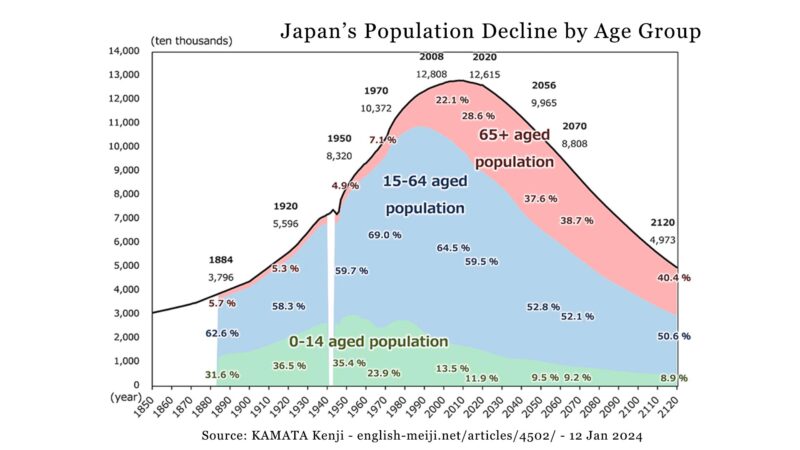
It’s population is already in decline, towns left abandoned, houses on the market for €1. It’s a similar story in Japan. The population under 14 peaked in 1950. The working age population peaked in 1985. The total population peaked in 2020, but now Japan faces this inexorable decline in the total population, which is very hard to reverse. Not only do you have a low fertility rate, but you have an ever diminishing cohort of young people. Politicians are starting to panic.
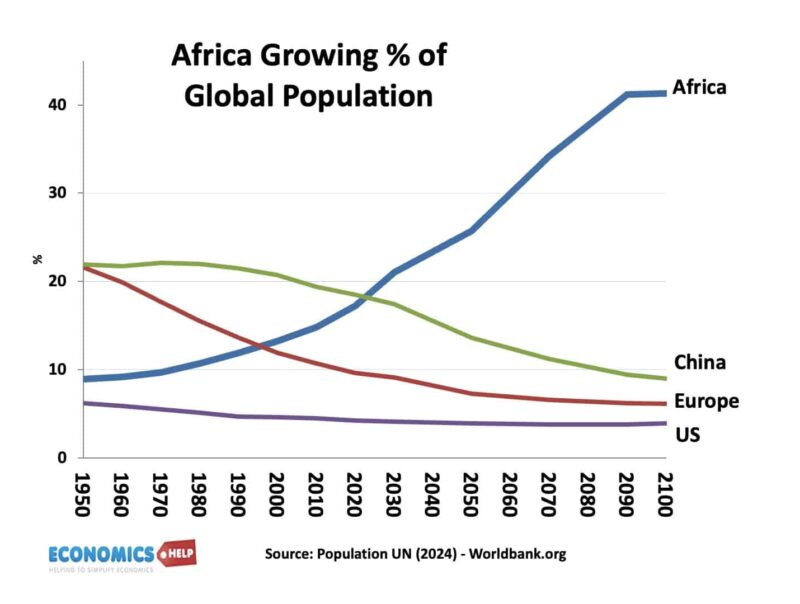
Japan and Italy are the first countries in population decline, but others are close to the tipping point Russia, Korea, China, Germany and Spain. The UK and US are something of an outlier.

This is Europe’s population, boom and bust within the span of a century. And we are also set for a huge shift in the global population. Europe will decline, and Africa will rise as share of the global population. But, one word of caution, population forecasters have regularly been caught out by fertility rates falling faster than predicted. The most recent evidence shows that African fertility rates are falling much faster than UN models can keep up with.
Population Bomb
Back in the 1960s Professor Ehrlich published the “Population Bomb” predicting mass starvation from the exploding global population. To understand the fear, it was worth bearing in mind, during the 1960s the global population exploded from 3 billion to 3.7 billion a 22% rise in just 10 years. The book began with the cheery prediction that “In the 1970s, millions of people will die from starvation. In fact, doomsday predictions were quite common in that era. In 1972, the Club of Rome published “The Limits of Growth” warning that consumption and population growth could lead to economic collapse. It seems the ghost of Thomas Malthus couldn’t be laid to rest.
Governments in China, Korea and Japan took the warnings to heart. They embarked on aggressive policies to reduce the birth rate. In fact, they were so successful that 60 years later they are desperately trying to reverse this dramatic shift in demographics. But, whilst it was easy to reduce birth rates, efforts to encourage bigger families have fallen mostly flat. Whether it is cash incentives, a four day week or better childcare, it does little to move the dial.
What will it be like?
In Empty Planet, Darrell Bricker and John Ibbitson argue the end of the world will be quiet —not a bang, but the soft shuffle of empty classrooms, shuttered maternity wards, and aging voices echoing in half-full cities. But, a fall in the population does give the tantalising prospect of many potential benefits. Imagine, your city with half of the population, how would that affect house prices and wages? Housing costs would almost certainly been lower. With fewer people, you can expect higher real wages, as a relative shortage of workers tends to push up wages. It is a very imperfect comparison but the black death,h which caused a 30% drop in the population within a few years, did really did lead to higher wages for the poorest.
With lower population, not only will housing costs be lower and wages higher, there will be more space, less congestion. Wander down to the Louvre and the queues will be half the size. There won’t be the pressure to build houses on greenbelt land, in fact, smaller population sizes would make it possible to rethink urban environments, creating local environments not dominated by the car, but designed for people.
Will it be a low population nirvana?
However, before you get overexcited about this nirvana of a lower population – there are two things – firstly, you almost certainly won’t live to see it. Europe’s population is set to fall, but it won’t be dramatic untilthe next century. But, what you definitely will live through is an ageing population. Schools and nurseries will shut, but we will be converting them into old age homes. The population pyramid is going to be skewed.
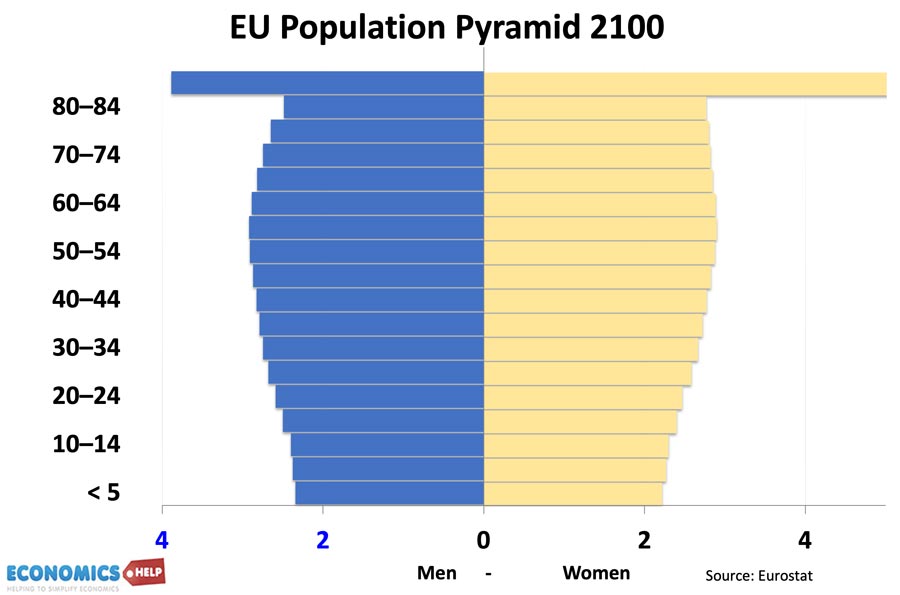
If you were born in 2000, you will be supporting the weight of old people. It is people aged 20-60 who are net fiscal contributors to the government budget.
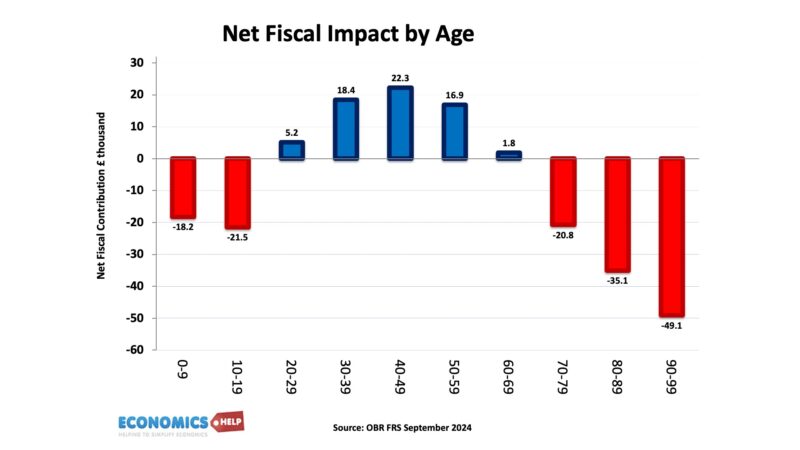
The older generation are net recipients. But, most welfare systems are based on the assumption, you would have a steady inflow of young people, so what happens when that dries up? Well government debt rises, and it is forecast to keep rising.
But, despite dire forecasts for rising government debt, the older generation are not in the mood to have their pension benefits cut. When the French government tried to raise the retirement age, there were strikes and protests. But you haven’t seen anything yet. In 2033, US social security will be insolvent, if not before. Whatever challenges the state have, it will get more severe in the future. Pension spending and health care costs will soar, but tax revenues won’t.
Will Economic Growth Bail Us Out?
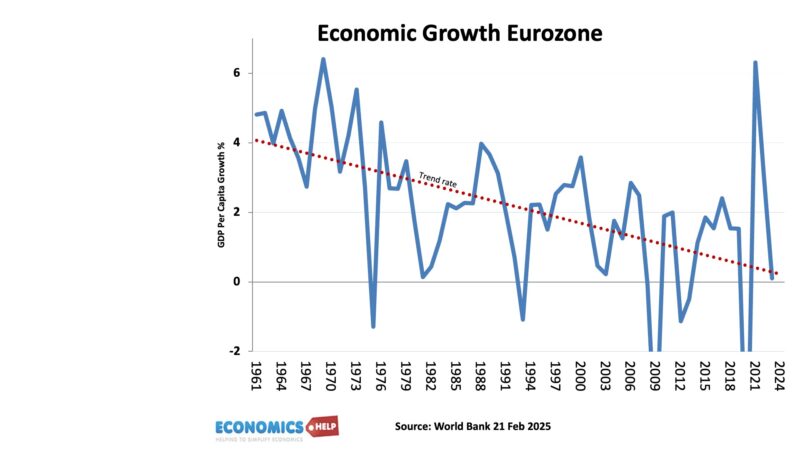
Also, you can’t rely on economic growth to bail us out. An ageing population tends to grow more slowly because there isn’t the same dynamism and incentive to invest. In fact, when you have fewer births and a lower working age population, then there will be a smaller pool of innovative ideas and human creativity which is critical for improving living standards. When you have a large population, there is a greater likelihood of an Einstein or Nikola Tesla, and there is a greater chance of that technological breakthrough. Though you could also argue there is a smaller chance of a Mark Zuckerberg or Rupert Murdoch.
Also, will a lower population actually transform into higher wages and cheaper housing? There is no guarantee. It will still depend on the power structure and levels of inequality. If we move to a brave new world of big tech monopolies capturing the benefits of AI, a lower population is not going to solve these fundamental problems. Also, if a lower population leads to less innovation, lower productivity and lower growth, the kind of growth we saw in the post-war period may end.
Environmental Problems
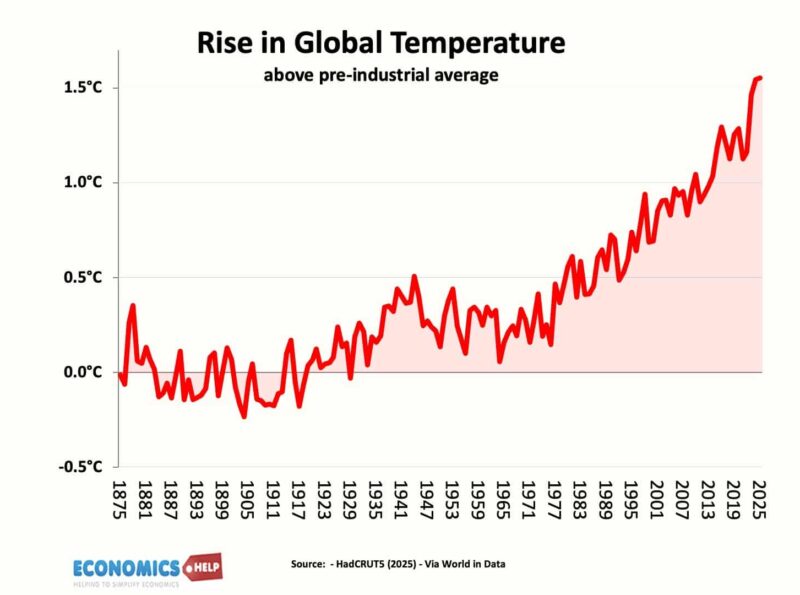
Now, it’s easy to make fun of those doomsday scenarios from the 1960s and 70s.

In fact, if anything, there has been a remarkable improvement in global poverty rates, and although there have been regional famines, it was always related to local factors rather than global population. However, it would be unfair to completely dismiss those concerns about the environment. In one sense, warnings of environmental damage have proved true. Polar ice caps are melting and the global temperature is rising. It is contributing to a rise in extreme weather events. Even if governments would prefer to ignore the inconvenient truth, insurance costs are soaring because insurers know the global environment is increasingly at risk. The high global population places demands on water, land and increases levels of pollution. Despite the rise of renewable energy and better technology, the world continues to emit higher levels of CO2. A fall in the population or at least stabilising populations is one way of limiting environmental pollution and man-made costs to the environment. It seems we are incapable of self-restraint; population collapse is the only real solution. But, the problem is there is no easy reversal of all the changes that have occurred since 1960. By the time the population falls to a manageable level, large parts of the world may be increasingly uninhabitable.
There is also a paradox: if the advanced world sees a collapse in the population, their budgets will be severely strained by costs of ageing population, leaving little room for the mitigation of environmental costs.
Solutions?
Could an ageing population and population collapse be solved by artificial intelligence? If you want to write computer code, AI will save you time and increase productivity, but if you want to care for an ageing parent with alzheimers, AI will not change the bed sheets for you. Now maybe AI will give us more time for things like caring for family, but people have been predicting technology would lead to shorter working week since Keynes’s famous prediction of 16 hour week in 1936. It never happened. What may happen is that as the population ages, we find a way to keep working for longer, if technology does more of the boring physical, repetitive work like picking fruit.
Will we see a rise in mass migration as countries compete for labour. To some extent as migration has always been part of the story, but migrants soon become old and tend to copy same low fertility rates.
Will a fall in birth rates ultimately solve itself? If the population falls, will it cause people to take a new look at priorities. Many blame high housing costs for low birth rates, but if housing did become cheaper, this barrier would be lower.
However, I’m not convinced because the argument that economics is behind declining fertility rates is only part of the story, the bigger cause is something much more pervasive a change in the way we live and the impact of phones and social media.
Sources
“Empty Planet” https://amzn.to/4nLg3Ro
“After the Spike” https://amzn.to/3IqYaHf
https://www.nytimes.com/interactive/2023/09/18/opinion/human-population-global-growth.html
https://www.thelancet.com/journals/lancet/article/PIIS0140-6736%2824%2900550-6/fulltext
https://ourworldindata.org/grapher/temperature-anomaly
https://www.mercatornet.com/to_the_surprise_of_demographers_african_fertility_is_falling
https://english-meiji.net/articles/4502/
https://www.nytimes.com/interactive/2023/09/18/opinion/human-population-global-growth.html
https://www.nytimes.com/interactive/2023/09/18/opinion/human-population-global-growth.html
